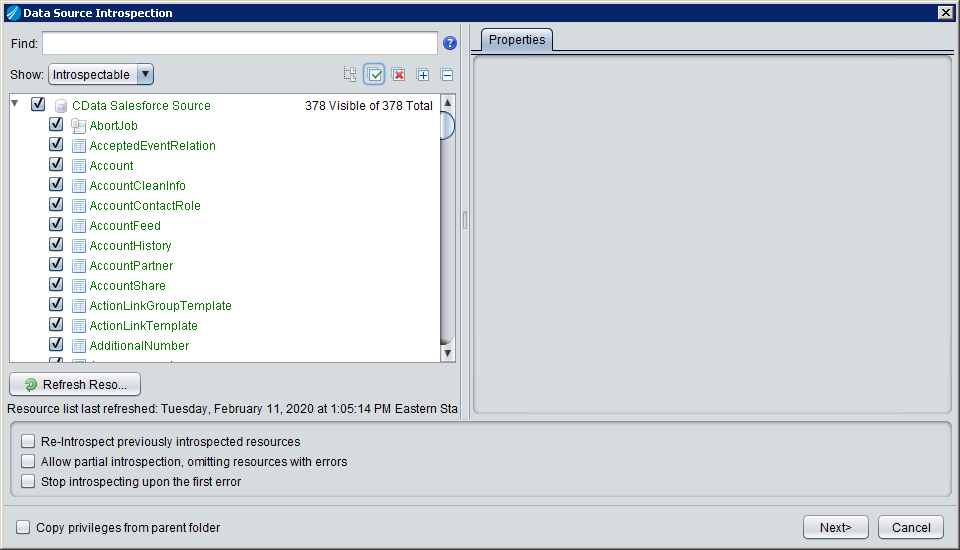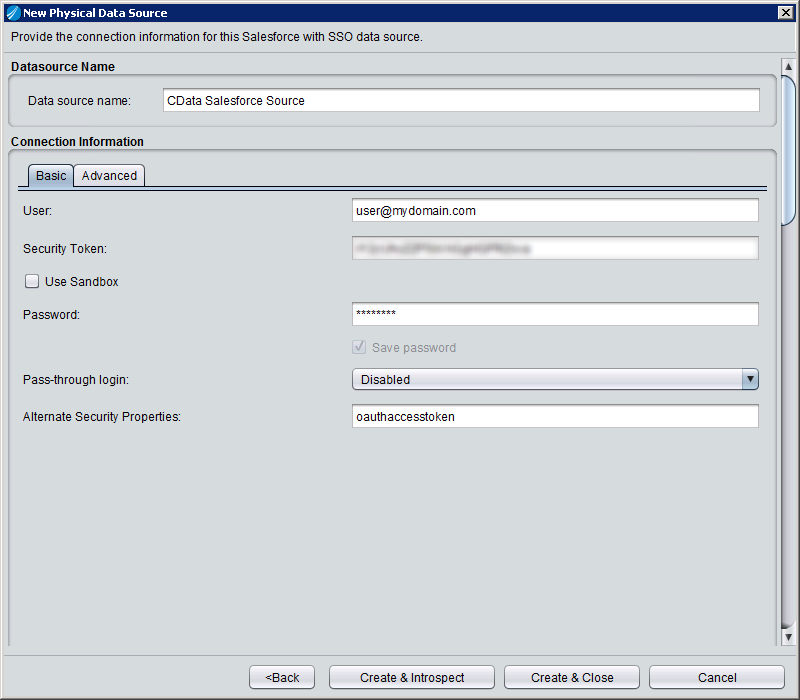Discover how a bimodal integration strategy can address the major data management challenges facing your organization today.
Get the Report →Access Live Dynamics 365 Data in TIBCO Data Virtualization
Use the CData TIBCO DV Adapter for Dynamics 365 to create a Dynamics 365 data source in TIBCO Data Virtualization Studio and gain access to live Dynamics 365 data from your TDV Server.
TIBCO Data Virtualization (TDV) is an enterprise data virtualization solution that orchestrates access to multiple and varied data sources. When paired with the CData TIBCO DV Adapter for Dynamics 365, you get federated access to live Dynamics 365 data directly within TIBCO Data Virtualization. This article walks through deploying an adapter and creating a new data source based on Dynamics 365.
With built-in optimized data processing, the CData TIBCO DV Adapter offers unmatched performance for interacting with live Dynamics 365 data. When you issue complex SQL queries to Dynamics 365, the adapter pushes supported SQL operations, like filters and aggregations, directly to Dynamics 365. Its built-in dynamic metadata querying allows you to work with and analyze Dynamics 365 data using native data types.
About Dynamics 365 Data Integration
CData simplifies access and integration of live Microsoft Dynamics 365 data. Our customers leverage CData connectivity to:
- Read and write data in the full Dynamics 365 ecosystem: Sales, Customer Service, Finance & Operations, Marketing, and more.
- Extend the native features of Dynamics CRM with customizable caching and intelligent query aggregation and separation.
- Authenticate securely with Dynamics 365 in a variety of ways, including Azure Active Directory, Azure Managed Service Identity credentials, and Azure Service Principal using either a client secret or a certificate.
- Use SQL stored procedures to manage their Dynamics 365 entities - listing, creating, and removing associations between entities.
CData customers use our Dynamics 365 connectivity solutions for a variety of reasons, whether they're looking to replicate their data into a data warehouse (alongside other data sources)or analyze live Dynamics 365 data from their preferred data tools inside the Microsoft ecosystem (Power BI, Excel, etc.) or with external tools (Tableau, Looker, etc.).
Getting Started
Deploy the Dynamics 365 TIBCO DV Adapter
In a console, navigate to the bin folder in the TDV Server installation directory. If there is a current version of the adapter installed, you will need to undeploy it.
.\server_util.bat -server localhost -user admin -password ******** -undeploy -version 1 -name Dynamics365
Extract the CData TIBCO DV Adapter to a local folder and deploy the JAR file (tdv.dynamics365.jar) to the server from the extract location.
.\server_util.bat -server localhost -user admin -password ******** -deploy -package /PATH/TO/tdv.dynamics365.jar
You may need to restart the server to ensure the new JAR file is loaded properly, which can be accomplished by running the composite.bat script located at: C:\Program Files\TIBCO\TDV Server <version>\bin. Note that reauthenticating to the TDV Studio is required after restarting the server.
Sample Restart Call
.\composite.bat monitor restart
Authenticate with Dynamics 365 Using OAuth
Since Dynamics 365 authenticates using the OAuth protocol and TDV Studio does not support browser-based authentication internally, you will need to create and run a simple Java application to retrieve the OAuth tokens. Once retrieved, the tokens are used to connect to Dynamics 365 directly from the adapter.
The following code sample shows how to authenticate with Dynamics 365. You will simply need to execute the Java application with the tdv.dynamics365.jar file in the class path.
Dynamics365OAuth oauth = new Dynamics365OAuth();
oauth.generateOAuthSettingsFile("InitiateOAuth=GETANDREFRESH;" +
"OrganizationUrl=https://myaccount.operations.dynamics.com/;Edition=Sales;" +
"OAuthSettingsLocation=C:\dynamics365\OAuthSettings.txt;");
Once you deploy the adapter and authenticate, you can create a new data source for Dynamics 365 in TDV Studio.
Create a Dynamics 365 Data Source in TDV Studio
With the CData TIBCO DV Adapter for Dynamics 365, you can easily create a data source for Dynamics 365 and introspect the data source to add resources to TDV.
Create the Data Source
- Right-click on the folder you wish to add the data source to and select New -> New Data Source.
- Scroll until you find the adapter (e.g. Dynamics 365) and click Next.
- Name the data source (e.g. CData Dynamics 365 Source).
Fill in the required connection properties.
Edition and OrganizationUrl are required connection properties. The Dynamics 365 connector supports connecting to the following editions: CustomerService, FieldService, FinOpsOnline, FinOpsOnPremise, HumanResources, Marketing, ProjectOperations and Sales.
For Dynamics 365 Business Central, use the separate Dynamics 365 Business Central driver.
OrganizationUrl is the URL to your Dynamics 365 organization. For instance, https://orgcb42e1d0.crm.dynamics.com
NOTE: Set the OAuthSettingsLocation property in the DV Adapter to the same value you used when performing the OAuth authentication (see above).
![Filling in Connection Information (Salesforce is shown.)]()
- Click Create & Close.
Introspect the Data Source
Once the data source is created, you can introspect the data source by right-clicking and selecting Open. In the dashboard, click Add/Remove Resources and select the Tables, Views, and Stored Procedures to include as part of the data source. Click Next and Finish to add the selected Dynamics 365 tables, views, and stored procedures as resources.

After creating and introspecting the data source, you are ready to work with Dynamics 365 data in TIBCO Data Virtualization just like you would any other relational data source. You can create views, query using SQL, publish the data source, and more.






